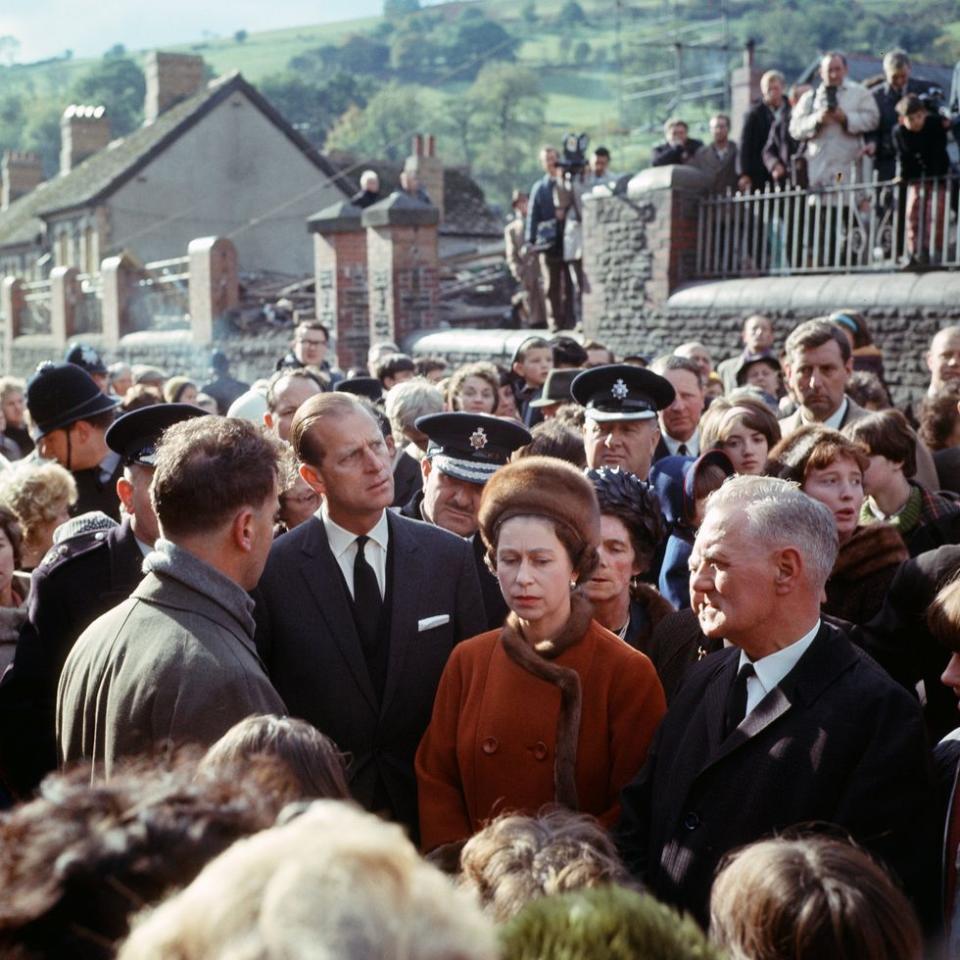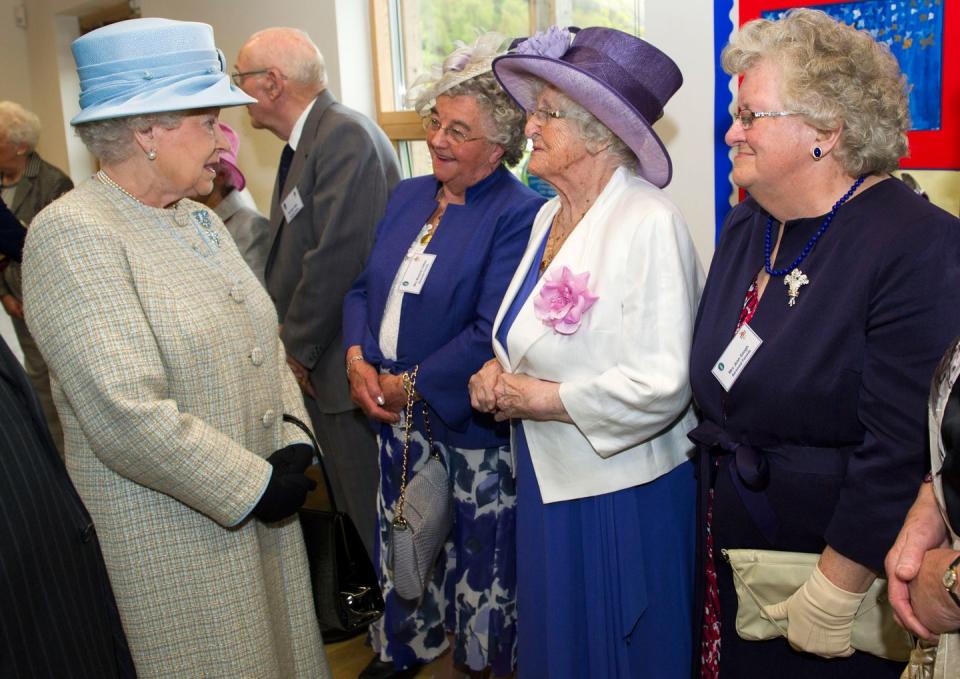The Devastating True Story of the Aberfan Mining Disaster in 'The Crown'

For history buffs, the title card at the beginning of The Crown Season 3, Episode 3—“Aberfan, Wales”—will provoke an instant sense of dread. But for most viewers, particularly in the United States, this episode will serve as an introduction to one of the most devastating incidents in modern British history. As chronicled in the horrifying episode, the 1966 Aberfan mining disaster killed 144 people, most of them children, and became a moment of public reckoning for the queen. Here’s what you need to know about the real story behind the episode.
What exactly happened at Aberfan?
On the morning of October 21, 1966, a coal tip on a mountain slope above Aberfan collapsed. A coal tip is essentially a pile of mining waste material, and after several days of heavy rainfall in the area, this tip had become waterlogged and began to sink. The rainwater turned the coal waste into liquid slurry, which spilled out after the tip collapsed and slid down the mountainside, creating an avalanche that buried several buildings in Aberfan, including the Pantglas Junior School. In the end, 144 people were killed; 116 of them were children.
In one of several harrowing accounts in the BBC’s exhaustive oral history of the incident, survivor Jeff Edwards, who was eight years old at the time, recalls his experience inside the buried school. “It was black all around me but there was an aperture of light about 10ft above me,” he said. “I could hear crying and screaming. As time went on they got quieter and quieter as children died, they were buried and running out of air.”
Per The Independent, concerns had been raised about the danger of the tip’s location long before the disaster, and its placement on an area of ground that sat above underground water springs went against regulations. But the National Coal Board took no action to enforce its own regulations, which could have averted the disaster.

How did Queen Elizabeth II respond?
As depicted in The Crown, the queen was conflicted over how to respond to the disaster. She initially refused to visit Aberfan, a decision that sparked widespread criticism in the press. Per Sally Bechdel Smith’s biography, Elizabeth the Queen, the decision not to visit was motivated by not wanting to distract from the essential rescue work. “People will be looking after me,” Smith reported the queen as saying. “Perhaps they’ll miss some poor child that might have been found under the wreckage.”
When the queen did eventually visit Aberfan eight days after the incident, she became visibly emotional as she surveyed the damage and spoke with survivors. “If the queen does regret not coming here straight away, I think that is misplaced,” Edwards told the South Wales Echo in 2002. “When she did arrive she was visibly upset and the people of Aberfan appreciated her being here. She came when she could and nobody would condemn her for not coming earlier, especially as everything was such a mess.”
In 2002, the queen described her delayed response to the Aberfan disaster as “her biggest regret.” In 2016, the queen sent a personal message—delivered by Prince Charles, who is Prince of Wales—to Aberfan to mark the 50th anniversary of the disaster.
How was Antony Armstrong-Jones involved?
While The Crown takes some liberties with royal characters’ involvement in the Aberfan response—Philip is shown attending a funeral that he wasn’t at in real life, for instance—Antony Armstrong-Jones’s emotional visit to the village really happened. “When I heard the news of the disaster on the wireless I felt I should be there because I was Welsh and thought the Welsh should stick together,” Antony told WalesOnline in 2006. “So I just got on a train and went straight down.” He was deeply affected by what he saw in Aberfan and wrote in a letter to Princess Margaret, “Darling, it was the most terrible thing I have ever seen.”

Was the episode filmed in Aberfan?
The Crown didn’t film any scenes in Aberfan, but in the nearby village of Cwmaman. Edwards told the BBC that the show’s producers contacted him in advance to explain their plans, and he in turn put them in touch with community groups so that local residents could share their views. “Following these meetings the production team decided to put on a public meeting which was held earlier this month and at which a dozen or so residents turned up and they outlined their proposals to them," Edwards explained.
“The production team made spectacular efforts to show respect and consideration,” showrunner Peter Morgan told The Guardian. “But I underestimated how raw it still was. The best you have to rely on is your conscience and your own belief in what the truth is.”
Producer Oona O Beirn also revealed to The Guardian that some relatives and neighbors who lost loved ones in the Aberfan disaster took up an invitation to appear as extras in the episode. During the course of filming, they were offered counseling—for the first time in 53 years. “We had a therapist to help all the people who were recreating such a horrific scene,” O Beirn explained. “People who live there are still traumatised, of course, and we found they’d never been offered help before. Now we are trying to arrange more.”
In a statement, the producers of The Crown said, “The third season of The Crown will cover the major historical events of Elizabeth II’s reign from 1963–1977 and all strongly felt the Aberfan disaster and the events that followed must be included, especially as it continues to hold a deep resonance for the nation and the queen herself.
“As producers, we feel a responsibility to remain true to the memory and the experience of the survivors, so have met with community leaders, as well as the people of Aberfan on a number of occasions as part of our in depth research and to discuss our approach.
“We have been made to feel welcome by the residents who have been very helpful in providing insight into one of the most tragic events of the 20th century.”
You Might Also Like

